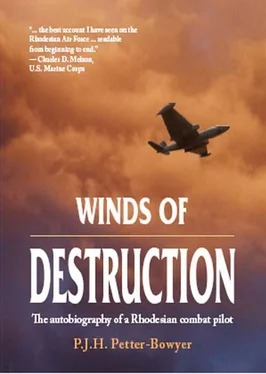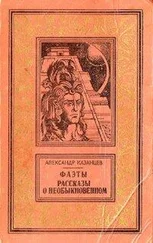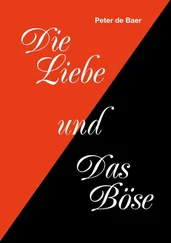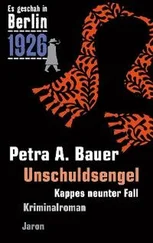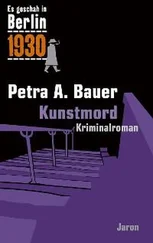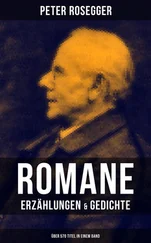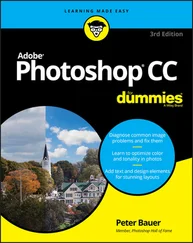Peter Petter-Bowyer - Winds of Destruction
Здесь есть возможность читать онлайн «Peter Petter-Bowyer - Winds of Destruction» весь текст электронной книги совершенно бесплатно (целиком полную версию без сокращений). В некоторых случаях можно слушать аудио, скачать через торрент в формате fb2 и присутствует краткое содержание. Город: Solihull, Pinetown, Год выпуска: 2012, ISBN: 2012, Издательство: Helion & Company, 30° South Publishers, Жанр: Биографии и Мемуары, на английском языке. Описание произведения, (предисловие) а так же отзывы посетителей доступны на портале библиотеки ЛибКат.
- Название:Winds of Destruction
- Автор:
- Издательство:Helion & Company, 30° South Publishers
- Жанр:
- Год:2012
- Город:Solihull, Pinetown
- ISBN:9781908916754
- Рейтинг книги:5 / 5. Голосов: 1
-
Избранное:Добавить в избранное
- Отзывы:
-
Ваша оценка:
- 100
- 1
- 2
- 3
- 4
- 5
Winds of Destruction: краткое содержание, описание и аннотация
Предлагаем к чтению аннотацию, описание, краткое содержание или предисловие (зависит от того, что написал сам автор книги «Winds of Destruction»). Если вы не нашли необходимую информацию о книге — напишите в комментариях, мы постараемся отыскать её.
Winds of Destruction — читать онлайн бесплатно полную книгу (весь текст) целиком
Ниже представлен текст книги, разбитый по страницам. Система сохранения места последней прочитанной страницы, позволяет с удобством читать онлайн бесплатно книгу «Winds of Destruction», без необходимости каждый раз заново искать на чём Вы остановились. Поставьте закладку, и сможете в любой момент перейти на страницу, на которой закончили чтение.
Интервал:
Закладка:
Whilst lawyers in London settled down to preparing written agreement for all parties’ signatures at some time in December, the SAS moved in on the bridges with RLI troops in support. We all knew they had to act fast before any political change in direction occurred. In four days, nine primary road bridges and one rail bridge were dumped. The SAS demolition teams had become so expert in their tasks that bridges were downed even before their Cheetah transport had reached their refuelling points back in Rhodesia. This not only resulted in the ground teams having an unnecessarily long wait for recovery, it put our COMOPS planners back to work revising methods, movement plans and time-scales for the destruction of Mozambican bridges in Op Manacle.
Eight of the Zambian bridges had been specifically selected to curb ZIPRA’s movements to the border. Another two across the Mubulashi River were not. Whereas we were disallowed from taking any action against railway bridges on the line from Lusaka to South Africa, the rail bridge on the Tanzam rail line and an adjacent road bridge over the Mubulashi River were taken out. This was to complement the downing of the Chambeshi bridges on the same line five weeks earlier and to deliberately pressurise the Zambia Government. If this over-stressed Kenneth Kaunda’s economy, it was nothing compared to what was planned next. The same SAS commander who had taken out the fuel refinery at Beira in Mozambique was about to launch a purely SAS raid to destroy Zambia’s large fuel refinery at Ndola. Simultaneous with this, Op Manacle was to go ahead on the Mozambican bridges. This was all very exciting stuff but it came to an abrupt end on 22 November when General Walls signalled COMOPS instructing that all external offensive operations were to cease forthwith. The war in Zambia and Mozambique was over. ZIPRA was out of the game, but General Walls instructed that internal operations against ZANLA were to be intensified until the expected ceasefire came into effect. He said this might occur before Christmas.
Chapter 10

Ceasefire

A TOTAL CEASEFIRE WAS TO come into immediate effect when all parties to the Lancaster House agreement signed the enacting document. As soon as this happened, the warring forces would cease hostilities and all BSA policemen were to revert to normal policing duties. The RSF were to return to barracks whilst ZIPRA and ZANLA forces were to move into sixteen (later increased to seventeen) assigned Assembly Points (APs) inside Rhodesia. The APs were to be under the control and protection of a Commonwealth Monitoring Force (CMF). Nothing was said of the Pfumo re Vanhu auxiliaries though, ultimately, they also remained in their bases.
In addition to his main duties, the Commanding General of CMF was to head a Ceasefire Committee. This committee of eight, comprising two officers each from the British Army, the RSF, ZIPRA and ZANLA, was to facilitate inter-force co-operation and deal with any ceasefire violations that might occur.
When Lieutenant-General Walls returned to COMOPS from London, he called me to his office to tell me that, when the time came, I was to be his personal representative on the Ceasefire Committee. He said, “I refuse to sit with those bloody Brits and communists or give them any sense of equal rank with myself or any of the service commanders.” Because I held the rank group captain (Army equivalent colonel) he decided to lend weight of rank to RSF representation by recalling Major-General Bert Barnard from retirement, but only to attend committee meetings. All executive functions were to be handled by me. My lack of faith in Bert Barnard caused me some concern but, in the event, we got on fine.
In addition to Ceasefire Committee work, it would be my responsibility to act as the liaison officer between ZIPRA, ZANLA and COMOPS. This meant I had to establish a close personal relationship with the top commanders with a view to providing General Walls feedback on all relevant matters. In addition, I was to do whatever I could to ensure that the senior men were adequately cared for and give them whatever assistance I considered reasonable. No funds or other guidelines were given.
It was such an anticlimax returning to routine operations, though my time was taken up to some extent in preparing for the early arrival of CMF military contingents. From early December, RAF C130 transporters arrived daily at Salisbury Airport and New Sarum ferrying in tons of equipment and Commonwealth soldiers from UK, Australia, New Zealand, Kenya and Fiji. Puma helicopters and large trucks came in by USAF C5 (Galaxy) heavy transporters.
On 12 December 1979, the British Governor and his wife, Lord and Lady Soames, arrived to strains of ‘God Save the Queen’. This all seemed so unreal to us who were once such ardent royalists. Rhodesians did not leap to attention as in times before UDI but simply looked on in stunned silence. The long years of sanctions were over, but it was impossible to fully comprehend that the country was now effectively in British Government hands, for the first time in history.
After the Governor’s arrival came two senior ZANLA commanders, Rex Nhongo (deputy commander) and Josiah Tungamirai (chief political commissar) who landed at Salisbury Airport to rapturous applause from thousands of black folk who had been forcibly ‘bussed in’ to welcome them. Later, at the same airport, the arrival of Joshua Nkomo with ZIPRA’s commanders, Lookout Masuku and Dumiso Dabengwa turned out to be a low-key affair.
I first met the CMF Commander, Major-General John Acland, at a cocktail party given by him to introduce his staff officers to General Walls, his staff officers and their wives. Being a purely military affair with no political overtones, it was a surprisingly easy-going occasion. One of the officers we met was married to a lady whose name was to become well known. He was Lieutenant-Colonel Parker-Bowles.
Following the signing of the Lancaster House Agreement in London by Muzorewa, Mugabe, Nkomo and Lord Carrington, the ceasefire came into effect at midnight on 23 December. The next morning, the first of the ZANLA and ZIPRA men trickled into the Assembly Points that had been made ready by CMF teams during the preceding two weeks.
Even before this I had been in daily contact with ZIPRA and ZANLA commanders and their staffs who were billeted in the Audio-Visual Centre of the University of Rhodesia. From day one I found it easy to communicate with ZIPRA’s Lookout Masuku and Dumiso Dabengwa. Both smiled easily and acted in a friendly manner. Their ZIPRA staff members were smart, efficient and courteous. Being the commander of ZIPRA, Masuku dressed in camouflage uniform and wore a Russian officer’s peak cap with no badge or emblem on its red band. Dabengwa wore smart-casual civilian dress.
ZANLA was very different. It took ages before Rex Nhongo and Josiah Tungamirai opened up to any degree, possibly because they suffered major daily hangovers from heavy drinking. From the moment of our first meeting, Rex pressurised me to arrange for the return of his Toyota Land Cruiser taken by Selous Scouts at New Chimoio. The uniformed ZANLA commanders and men were surly and slovenly. Visits to ZANLA at the Audio-Visual Centre were initially made uncomfortable by particularly mean-looking individuals who delighted in cocking their AK-47 rifles as I passed. Once he got to know me better and having been promised the return of his Land Cruiser, Rex Nhongo put an end to this nonsense.
Читать дальшеИнтервал:
Закладка:
Похожие книги на «Winds of Destruction»
Представляем Вашему вниманию похожие книги на «Winds of Destruction» списком для выбора. Мы отобрали схожую по названию и смыслу литературу в надежде предоставить читателям больше вариантов отыскать новые, интересные, ещё непрочитанные произведения.
Обсуждение, отзывы о книге «Winds of Destruction» и просто собственные мнения читателей. Оставьте ваши комментарии, напишите, что Вы думаете о произведении, его смысле или главных героях. Укажите что конкретно понравилось, а что нет, и почему Вы так считаете.
